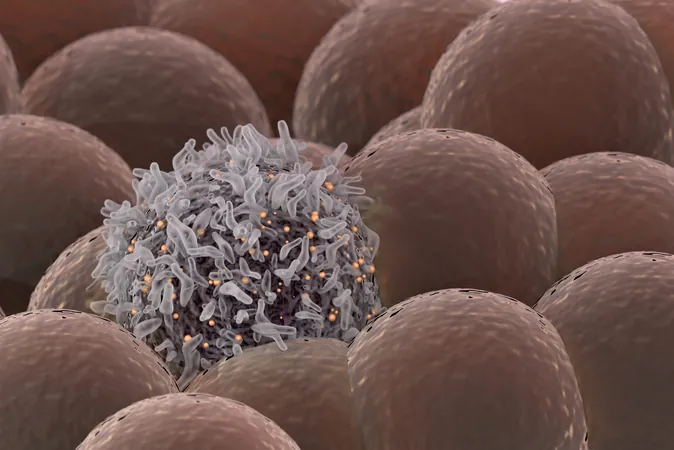
How Immune Cell Clusters Fuel the Spread of Breast Cancer
2025-09-17
Author: Li
Revolutionary Discoveries on Cancer Metastasis
Groundbreaking research from Huiping Liu and her team has unveiled a shocking link between immune cell interactions and the alarming spread of breast cancer. In two compelling studies published in *Nature Communications* and *The Journal of Clinical Investigation*, scientists reveal that circulating tumor cells (CTCs) form dangerous clusters with immune cells, dramatically boosting their metastasis potential.
The Role of Plexin-B2 in Metastasis
One of the most crucial findings from the first study pinpoints the protein Plexin-B2 (PLXNB2) as a significant factor in breast cancer's metastasis. Liu's team utilized advanced computational methods to unearth proteins that correlate with poor patient outcomes, discovering that PLXNB2 is prevalent in these lethal CTC clusters. Remarkably, these clusters can be up to 50 times more effective at generating metastases compared to isolated tumor cells.
"Tumor cells must navigate the bloodstream’s challenges and fend off immune attacks," Liu explains. "By clustering with immune cells, cancer can seed new growths while evading the immune system’s defenses." In experiments with mice lacking PLXNB2, there was a notable decrease in lung metastases, highlighting the protein as a promising target for future therapies.
Immune T-Cells: The Unlikely Allies of Cancer
The second study takes a deep dive into the immune system's role in cancer progression. By examining blood samples from advanced breast cancer patients, Liu and her team found that over 75% of samples containing CTCs also housed clusters of these tumor cells alongside white blood cells. Strikingly, a rare type of T-cell, known as double-positive T-cells (DPTs), was found to be especially influential.
These unique DPTs displayed characteristics of immune exhaustion, which may enable them to assist tumor cells in dodging immune detection. "The more signaling from these double-positive T-cells, the fewer tumor-fighting T-cells remain, leading to a greater tumor burden," Liu warns.
Combating Cancer with Targeted Therapies
Further investigation revealed that interactions between DPT cells and tumor cells, through molecules VLA-4 and VCAM1, were essential for the formation of these clusters. Blocking this interaction in mice significantly disrupted clustering and increased survival rates. This indicates that targeting these connections could lead to breakthrough cancer therapies.
In summary, these studies open a new frontier in our understanding of cancer biology and its complex relationship with the immune system. Liu emphasizes, "By pinpointing targets like PLXNB2 and VLA-4/VCAM1, we can develop innovative therapies aimed at preventing metastasis from the outset. Our ultimate goal is to eliminate tumor cell clusters, halt cancer's progression, and improve patient survival and quality of life."
As researchers tackle cancer from multiple angles, there’s newfound hope for controlling tumor behavior and enhancing the lives of those affected by this devastating disease.




 Brasil (PT)
Brasil (PT)
 Canada (EN)
Canada (EN)
 Chile (ES)
Chile (ES)
 Česko (CS)
Česko (CS)
 대한민국 (KO)
대한민국 (KO)
 España (ES)
España (ES)
 France (FR)
France (FR)
 Hong Kong (EN)
Hong Kong (EN)
 Italia (IT)
Italia (IT)
 日本 (JA)
日本 (JA)
 Magyarország (HU)
Magyarország (HU)
 Norge (NO)
Norge (NO)
 Polska (PL)
Polska (PL)
 Schweiz (DE)
Schweiz (DE)
 Singapore (EN)
Singapore (EN)
 Sverige (SV)
Sverige (SV)
 Suomi (FI)
Suomi (FI)
 Türkiye (TR)
Türkiye (TR)
 الإمارات العربية المتحدة (AR)
الإمارات العربية المتحدة (AR)